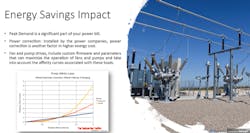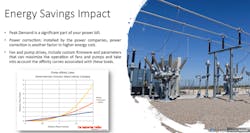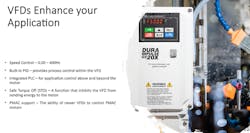What you need to know about AC motors and VFDs
Jeff Payne is a product manager for the Drives & Motors Group at AutomationDirect and has been working in the field of industrial automation for more than 25 years. During the live Q&A portion of the webinar, "Benefits of Modern Motors and Drives," Payne discussed advances in motor technology and how these advancements directly affect manufacturers.
PS: Can a VFD be used on a 110-volt AC motor?
JP: The short answer is no. You can connect 110 volts to some VFDs, and you need to check the VFD specs. For example, the GS20 models, you can connect 110 volts single phase, or 230 volts single phase. But the drive output or the motor connection itself will be a 3-phase, 230-volt output. Just based on the inherent design of a VFD, you can hook 110 volts up to some drives, power the DC bus, and then it will convert it back over to 3-phase output power. There are single-phase use soft starters that are available that can reduce your peak current to manageable levels, so you get better efficiencies and lower the start shock of your system. But they do not offer the same level of enhanced features and speed control offered by today's VFDs.
PS: Why should I use a drive on a pump or a fan?
JP: Drives are very useful on pumps and fans due to the pump and fan efficiency curves. Lowering the current and total power does save you money when using these with fan and pumps. There are definitely some algorithms that are built into these drives that allows you to definitely increase your efficiencies.
PS: Why are premium efficiency motors longer and sometimes heavier than less efficient motors?
JP: Motors, in order to reach the Department of Energy's government-required efficiencies, most often use more copper to be added to increase the length of the motor itself. You cannot increase the width or the height of the motor because that would affect the NEMA frame rating, because one of the key dimensions of a frame rating for a NEMA motor is the height of the center of the shaft from the base of the motor. The diameter of the motor cannot change, so they increase the length of the motor. By adding this additional copper, the stator losses make up about 60% of the total losses, and it's here that the motor manufacturers have achieved significant gains in these efficiencies. They did this by increasing the overall length of the motor. That's where the copper is added to the motor to make it a more efficient motor.
PS: How come I did not need to worry about overheating a TEFC motor when using a VFD and then running the motor at really low speeds?
JP: It is something that you should worry about, and you'll typically see that there are minimum frequencies that you should be running a TEFC motor at. Again, a TEFC motor is a totally enclosed fan-cooled motor. On these motors, the shaft runs all the way through the end bell, the opposite end bell of the motor, and you've got a fan that is mounted to the shaft. The fan cooling is directly related to the speed of the motor. As you connect the motor across the line, it's going to be running at 60 hz, and that's what the motor is designed to run at. As you connect the VFD and you do lower the speed of the RPM to the motor, you're going to get less air pulled across that motor so you get less cooling.
As mentioned, the inverter duty motors, or premium efficiency motors, have better insulation built into the motors themselves, so they are designed to withstand these temperatures or run at higher temperatures and withstand that higher temperature rating. What you will find is that there is usually a rating of somewhere in the neighborhood of around 15 hertz is the minimum that you can run a TEFC motor without running the risk of overheating the motor.
PS: How does a VFD reduce inrush current? Can you give an example?
JP: On the inrush current, what you're looking at on this is, when you start a motor across the line, you get a spike that's generated because the short circuit that is created when you start up the motor, and this is an extremely high inrush that is generated because of the torque that is on the motor itself. The torque that is generated when you start a motor across the line, applying the full 60 hertz directly to the motor, that is reduced by gradually ramping up the motor with the A-cell feature on the VFD. By adding the time delay and the acceleration with the variable frequency drive, you do not generate that spike, because you reduced the torque of the load by ramping it up slowly.


